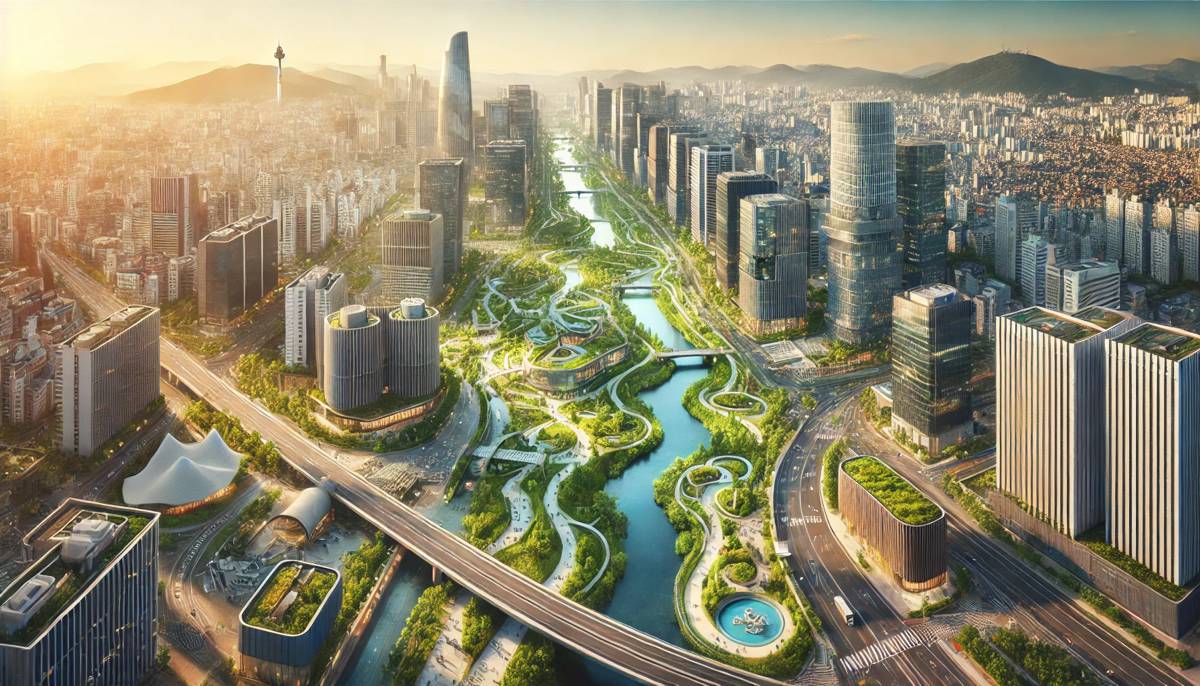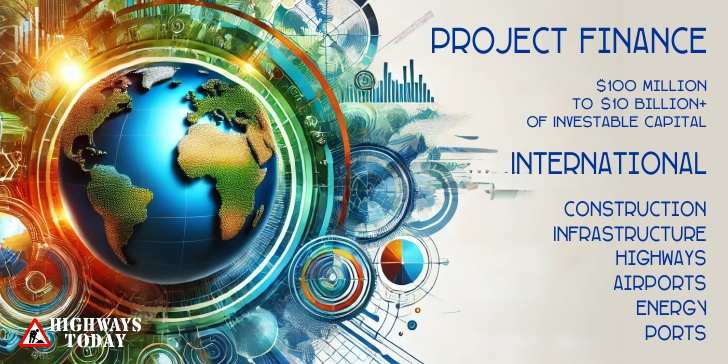Seoul is Building Resilient Cities for Sustainable Urban Growth
As urbanisation sweeps across the globe, cities have become powerful engines of economic growth, housing more than half of the world’s population and generating a significant share of global GDP. But these bustling hubs, while fostering innovation and providing essential social services, also grapple with pressing challenges—from energy demands and environmental pressures to infrastructure needs and climate impacts.
In the quest for sustainable and resilient urban development, Seoul, the capital of South Korea, offers a blueprint that’s turning heads worldwide.
With a unique blend of technological advancement, strategic public-private collaboration, and forward-thinking urban planning, Seoul has successfully transitioned to a low-carbon, highly livable metropolis. The city’s journey provides a valuable framework for other developing nations aspiring to balance growth with sustainability.
Let’s explore the strategies, policies, and innovations driving Seoul’s remarkable transformation.
The Path to Balanced Urban Development
Urban growth brings with it both opportunities and challenges. Rapidly expanding cities often face issues such as housing shortages, traffic congestion, pollution, and strained infrastructure. Seoul, however, has tackled these problems head-on with a balanced, innovative approach, achieving prosperity without compromising its commitment to a greener future.
A Polycentric Urban Model: Seoul’s urban development strategy is anchored in a polycentric approach, creating multiple, self-sufficient centres within the city. Instead of concentrating activities in one downtown area, Seoul has developed several business districts and metropolitan centres, each with a mix of commercial, residential, and recreational spaces. This model distributes population and economic activities more evenly, reducing pressure on core areas and fostering a balanced city layout.
By promoting mixed-use development, the city has integrated commercial spaces, housing, parks, and social services into multifunctional infrastructure and transit hubs. This polycentric approach not only improves residents’ quality of life but also boosts economic activity across different zones, making Seoul’s growth both inclusive and sustainable.
Expanding Green Spaces: In Seoul, green space is not just a luxury—it’s a key component of urban planning. The city transformed former arterial roads into vibrant water streams and “sky gardens,” integrating nature into the urban landscape. In 2023, the city achieved an impressive 18.74 square metres of green space per capita, a huge leap from just 5.73 square metres in 1975. By prioritising parks and green spaces, Seoul has improved air quality, provided habitats for wildlife, and created a refreshing escape from the urban grind for its residents.
Prioritising Public Transport: With a robust and efficient public transportation system, Seoul has maintained a public transport share of over 60% for the past three decades. The city has intentionally reduced road space for cars, aiming to improve walkability and bike-friendliness. This shift not only curbs emissions but also fosters healthier, more pedestrian-friendly neighbourhoods, setting a high standard for sustainable transport solutions.
Embracing Technological Innovation
In an era defined by digital transformation, Seoul leverages cutting-edge technology to enhance urban management and governance. Using big data, IoT, and digital twins, the city has refined urban planning processes and boosted the efficiency of essential services, from mobility and sewage management to safety monitoring.
This smart city approach, which includes real-time data on infrastructure and citizen needs, has been instrumental in Seoul’s rapid adaptability and resilience. By utilising technology for predictive maintenance, efficient energy use, and streamlined service delivery, the city showcases the immense potential of technology in shaping urban sustainability.
Empowering the Private Sector
South Korea’s private sector is a driving force behind the country’s economic growth and innovation, and Seoul’s government has played a vital role in nurturing it. Over the years, Seoul has rolled out numerous incentives—such as tax breaks, reduced tariffs, and financial assistance for export-oriented businesses—to spur private-sector growth. Today, South Korean conglomerates, including internationally renowned firms, owe much of their success to the city’s supportive environment.
In the 1970s and 1980s, the South Korean government funded a large portion of research and development initiatives. By the 1990s, however, private investment in R&D had taken the lead, accounting for over 60% of the nation’s innovation funding. This shift to private financing has also extended to housing supply and urban infrastructure development, fostering an ecosystem where businesses can thrive and contribute to Seoul’s economic resilience.
Global Rankings and Environmental Impact
Seoul’s commitment to sustainable development and economic vitality is reflected in its impressive global rankings. In the 2023 Composite Urban Competitiveness Index by Japan’s Mori Foundation, Seoul ranked seventh out of 48 cities. Additionally, it secured the 16th spot among 141 cities in the prestigious Global Smart City Index of 2023.
Moreover, despite its dense population, Seoul’s per capita CO₂ emissions remain lower than cities like Paris, London, and New York, according to 2021 OECD data. The United Nations Office for Disaster Risk Reduction has also recognised Seoul as a model city for its effective disaster reduction efforts. These achievements underscore the city’s success in promoting sustainability while fostering robust economic growth.
The Role of Leadership, Planning, and Stakeholder Engagement
Seoul’s accomplishments in urban development are deeply rooted in its strong leadership, meticulous planning, and active stakeholder participation. These elements have been pivotal in shaping the city’s journey towards a sustainable future.
Visionary Leadership: Leadership at the city level has been instrumental in driving Seoul’s urban development agenda. Political leaders have shown unwavering commitment to sustainable development goals, championing the necessary policy reforms and mobilising resources to turn plans into action. By creating an environment conducive to private sector growth and citizen well-being, Seoul’s leaders have set a strong foundation for a prosperous, sustainable metropolis.
Clear Policies and Regulations: The Seoul Metropolitan Government has implemented policies that encourage sustainable practices while protecting public interests. Clear laws guide private sector investments, ensuring alignment with the city’s objectives. By incentivising sustainable development practices and enforcing planning standards, the city has built a regulatory environment that supports long-term urban resilience.
Comprehensive Urban Planning
Seoul’s urban plan prioritises economic, social, and environmental considerations, creating a harmonious balance that drives growth without sacrificing sustainability. This approach includes:
- Business-friendly environments that attract investment and stimulate job creation.
- Green spaces and recreational facilities to promote healthy lifestyles.
- Efficient public transport and essential services, ensuring accessibility for all residents.
- Resilience-focused infrastructure, including strategic land use and emergency response systems.
By crafting a detailed and adaptable urban plan, Seoul has built a city where businesses thrive, citizens enjoy a high quality of life, and the environment is respected.
Compact and Mixed-Use Development: Seoul’s zoning regulations encourage compact, mixed-use growth, optimising land use and promoting dense, vibrant neighbourhoods. Tax reductions and deregulation initiatives incentivise developers to build high-density areas with a blend of residential, commercial, and retail spaces, creating a cohesive urban environment that meets diverse needs within a compact footprint.
Engaging Stakeholders for Long-Term Impact
Seoul’s government understands that sustainable urban growth requires buy-in from all stakeholders, from local communities to private businesses.
By actively involving stakeholders in project planning and execution, the city ensures that initiatives are well-designed, supported, and sustainable over the long term.
Smart Public Financing for Sustainable Growth
Public financing in Seoul focuses on essential urban infrastructure and services, particularly those that support private sector activities and promote social equity.
By providing tax breaks, subsidies, and preferential loans, the government attracts private capital to projects aligned with city priorities, fostering a collaborative model that maximises impact while sharing risks.
Seoul’s Sustainable Future: A Model for Cities Worldwide
As urban populations continue to rise, Seoul’s approach to sustainable development offers a valuable template for cities worldwide. Through a unique combination of polycentric planning, green spaces, smart technologies, and a robust partnership between the public and private sectors, Seoul has transformed itself into a resilient, liveable city equipped to meet the demands of the 21st century.
Other cities seeking to balance economic growth with environmental sustainability can learn much from Seoul’s journey. With its clear policies, innovative strategies, and commitment to inclusivity, Seoul continues to be a beacon of urban resilience and a leader in sustainable city development.





















